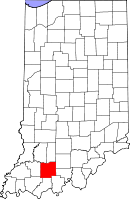# 10,896
The USDA has posted a 21 minute audio file of a press conference, with Q&A by journalists, regarding today's HPAI H7N8 outbreak in Indiana. While there are a great many unknowns, the hope is that by the middle of next week we'll know more about how this virus mutated into an HPAI strain.
Although we've no record of human infection with HPAI H7N8 - primarily because it has never been seen in the US before - the CDC is monitoring individuals who may have been exposed to the new strain of bird flu.
According to a Reuters report CDC says closely monitoring outbreak of new bird flu strain, that agency is coordinating with state and local health officials to implement the protocols we looked at last year in:
CDC HAN:HPAI H5 Exposure, Human Health Investigations & Response
CDC Clinician Guidance: Evaluating Patients Exposed to HPAI H5 Avian Flu.
While we've seen sporadic human infection with H7 avian viruses in the past, with the exception of China's H7N9, they have nearly always been mild. A few examples include:
- In 2003 a large outbreak of H7N7 (89 confirmed, 1 fatality) in the Netherlands – with nearly all reported cases having very mild (often just conjunctivitis) symptoms.
- The Fraser Valley H7N3 outbreak of 2004 resulted in at least two human infections, as reported in this EID Journal report: Human Illness from Avian Influenza H7N3, British Columbia.
- In 2006 1 person in the UK was confirmed to have contracted H7N3, and the following year, 4 people tested positive for H7N2 – both following local outbreaks in poultry.
- 3 mild cases in Italy in 2013 (see ECDC Update & Assessment: Human Infection By Avian H7N7 In Italy).
Of course – H7 flu strains - like all influenza viruses, are constantly mutating and evolving. What is mild, or relatively benign today, may not always remain so.
In 2008 we saw a study in PNAS that suggested the H7 virus might just be inching its way towards better adaptation to humans (see Contemporary North American influenza H7 viruses possess human receptor specificity: Implications for virus transmissibility).
You can read more about this in a couple of blogs from 2008, H7's Coming Out Party and H7 Study Available Online At PNAS.
As I said, we'll know a great deal more about this H7N8 virus in a few more days. This outbreak may be a one-off event, or like HPAI H5 last year, could signal the beginning of something larger.
Stay tuned.
